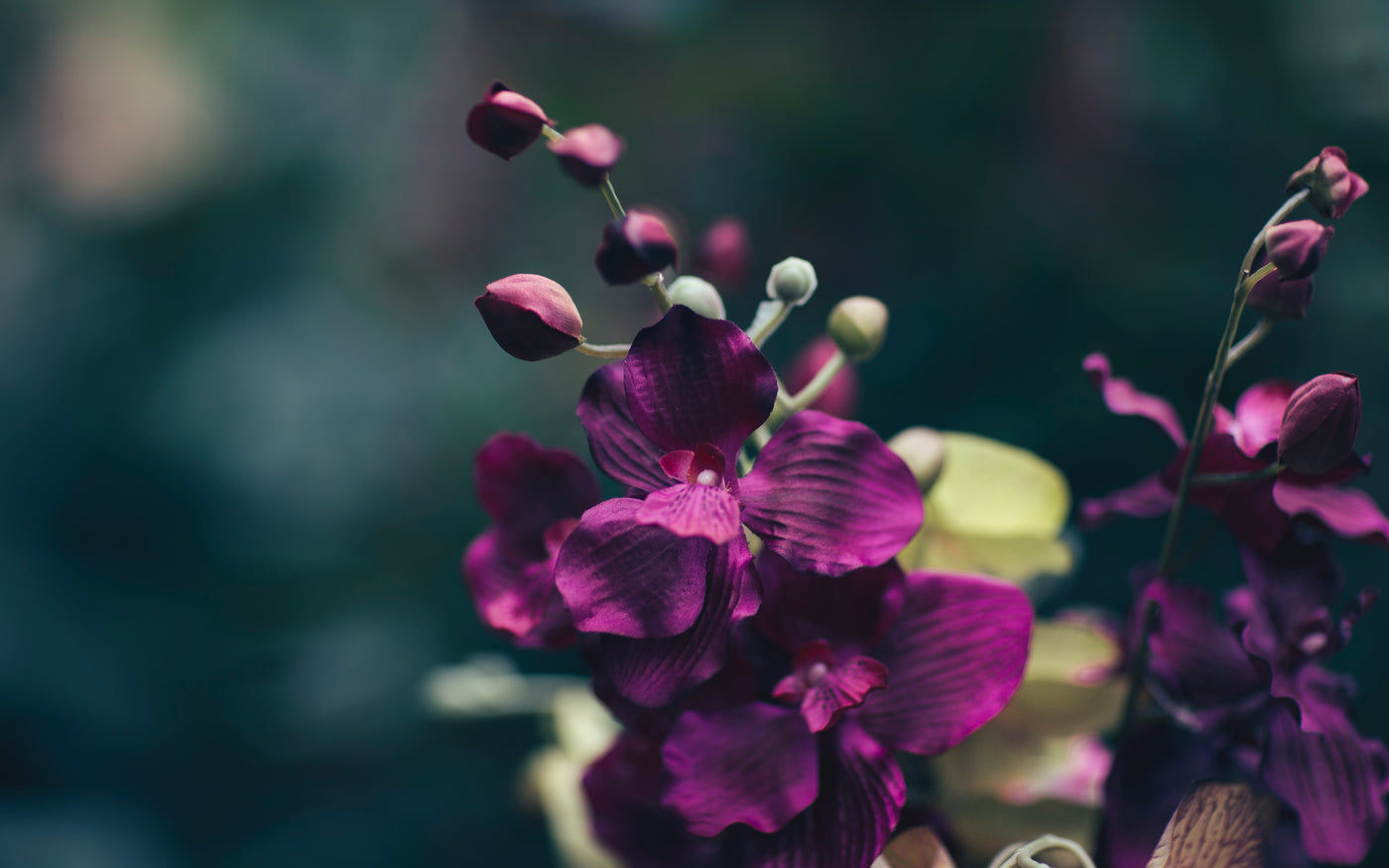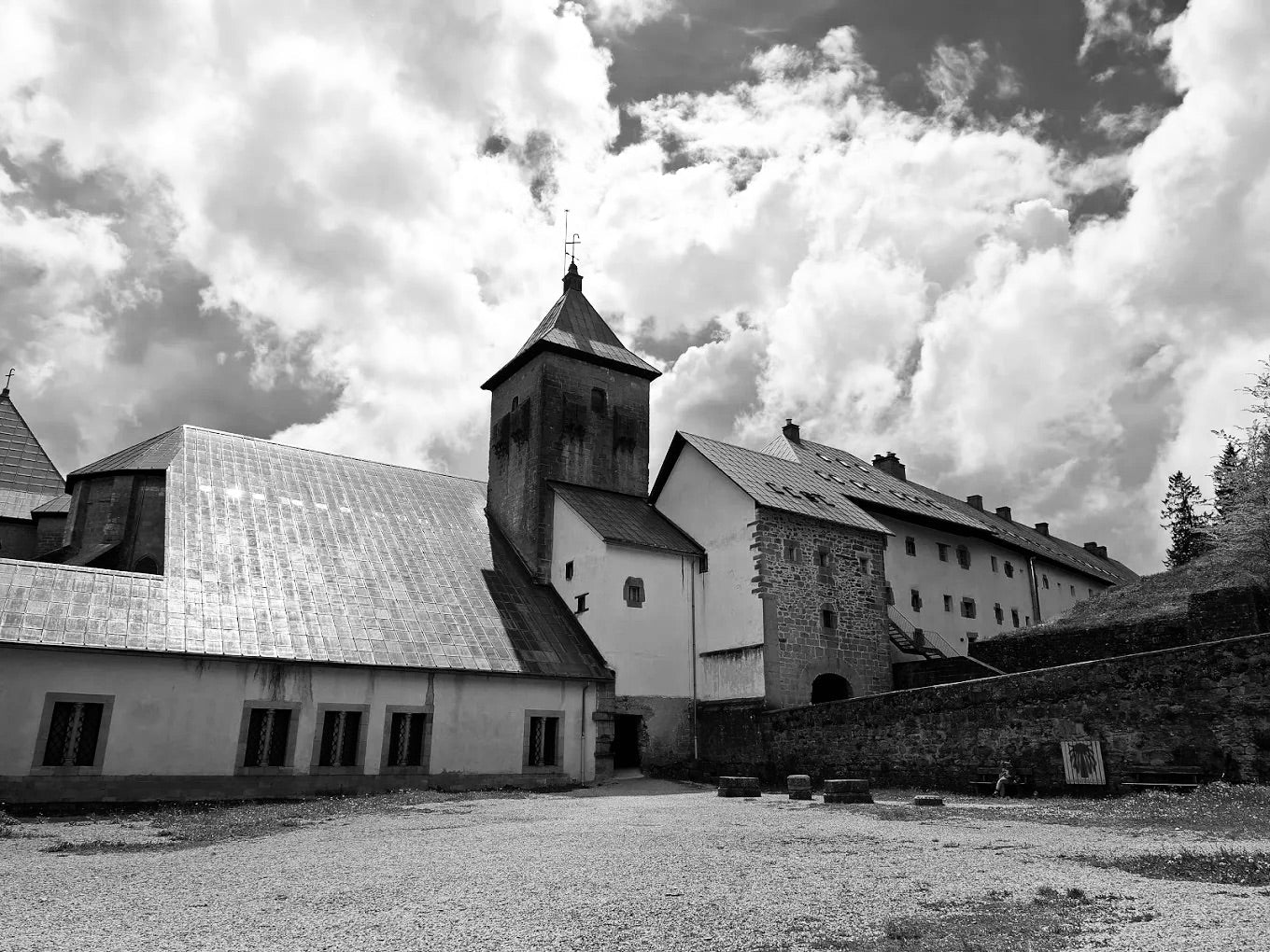
A new rug in the hallway is lined with rectangular light, cast by stairwell spindles. A half-moon shaped table balances two legs on the fringed edge of the carpet against a wall, a pile of books organized by color stacked on the bottom shelf. One pile of the three is made up of warm colors—reds, orange cream and golden yellow—there is even a book called Red within the mix. An image of Pablo Picasso sits on top, printed on the cover of a small book. He’s smoking, hand flipped in the air and donning a striped shirt coupled with plaid pants and loafers. It’s an old photo, the saturation of color subdued with a pastel book jacket, but the title, Dictionary of Biography, is bright, outlined with a yellow and turquoise flag.
Sitting intently, time seems to slow with the presence of light on the carpet and with the small lavender book in my lap. I picked it up years ago in a dusty shop and have only rarely opened it since. The near-perfect feeling that’s come over me juxtaposes with an earlier discussion about whether there was time enough for a walk. The fight for my limitations seems silly now. Contemplating what we make space for, is knowing the quality and weight of what we hold most dear. A beloved aunt remembers the birthdays of everyone she loves. I sit with words, noticing the way sunlight falls.
Both are important.
Sir Joseph Banks—an English botanist and explorer, apparently responsible for turning Kew Gardens (Queens) into an important center for botanical studies. His name is found in a left-hand column near the front of the book, page 16, and catches my eye as I scan the slightly yellowed pages. Continuing to flip through, I land on Andrew Carnegie—instrumental in his generous provisions for public libraries. Just thinking about the public spaces I have tucked myself into—across decades—begins shifting my conceptions. Suddenly, nothing is pressing. Suddenly, I’m enveloped by a whole different way of orienting around life’s minute-by-minute unfolding. It’s as if I’ve yanked a cord from a faulty energy source and plugged it back into something more sustainable—something infinite.
All this for taking a book off a shelf and turning its pages.
--
Soup with long noodles has been served downstairs where it's not quiet at all, the clanking of metal spoons on ceramic bowls keeping the rhythm of a meal I’m pleased to have served and not partaken in. Still with the book in my lap, I’m listening to a cacophony of chattering voices—a way of talking that is so rapid I can barely decipher individual words.
Is this a blip in my auditory processing or a foreign dialect comprehended only by those with less than two decades under their belts?
Before I can become distracted by the noise, the four classmates zip from the table to the sink and then back out the front door, some water run in between. A swarm of bees, chasing other distant nectar. I watch them from an upstairs window as they bustle down the driveway in unison, stepping over fallen branches and making their way toward higher ground where a third pair of sneakers can be saved from the flooded lawn. It feels like money in the bank to witness the way they communicate—brightening each other’s eyes—the way they listen. Eventually I turn my attention away from them and onto the ledge of the window where one of several orchids is on the precipice of bloom, evidence of a long and worthwhile wait that is required when caring for plants that lie dormant at times. The clear blue sky beyond the glass couples with the sun streaming in and yesterday’s weather seems an impossibility.
Edgar Degas—page 54. A French painter and sculptor, a contemporary of Monet. The vision of his plethora of Dancers springs to mind. Interest in this subject is a ready outlet for his obsession with movement and the use of pastels. Being drawn to his name among so many choices seems connected to my recent attempt at sharing master painters from another time with Jonah and Adrian—colorful images sent via text message with a few notes about what makes these artists recognizable. I make the effort for so many reasons, the least of which is imparting knowledge about art history.
Friday, 9:22PM, Houses at Auvers, Vincent van Gogh, 1890, Emphatic brush strokes and striking color, particularly yellow.
Tuesday, 7:21AM, Henri Matisse, Interior with a Young Girl, 1905, Always colorful and expressive, flattened shapes, intricate patterns.
Sunday, 3:21PM, Madame G. Van Muyden, Amedeo Modigliani, There is that long face again.
Sunday, 7:57PM, The Park, Gustav Klimpt, I usually associate Klimt with images of women and specs of gold— apparently, he painted landscapes as well.
--
The storm rages from pre-dawn ‘til dusk allowing our world to be fully lit for only one tiny sliver of the day, right around the time we need to go out in it. In a parking lot, a woman’s car door slips from her hand, flying into my door where it leaves a bit of red paint. The damage is minimal, but still I’ll want to get it fixed.
When the generator cuts off, I suspect it’s caused by the dryer, trying to circulate damp clothes. I’m concerned about going out beneath the trees to restart it, but I’ve lived on this stretch of land long enough to know we could be without power until Christmas.
Adrian and I step onto the porch where leaves and other debris have blown up, immediately noticing, and commenting on, how warm it feels. I say that it is this warm temperature that gives the storm its power—heat energy as fuel for severe weather. Six-story pines sway above us as we move into the front yard, going swiftly and directly to the two large soccer nets in the hopes of tipping them to the ground before they can be blown into the house. Looking up into the grey sky for any signs of danger, I’m also listening for sounds of cracking trunks or branches. Adrian moves away from me and picks up the opposite side of the plastic frame and together we work to lean it forward. We’re moving quickly and both glancing upward as we accomplish this first task. Then, Adrian comes back toward me, and I grab his hand as we start jogging away from what seems like the most dangerous area and head out back and around the side of the house where the generator is situated. Although there has been a break in the rain, the storm is loud, and we raise our voices to be heard.
I need to focus my attention to execute the re-start and I am aware of a towering birch tree swaying right behind me. It’s one I’ve been enamored by for many years, but on days like this I’ve often wondered how deep its roots go.
I give Adrian a command.
You watch that tree while I do this.
Opening the metal door to the machine, I can see the switch I need and quickly press the red button. It’s simple, but not a guarantee. The crank of the engine responds, joining in once again with the hum of the other generators along the peninsula. It’s satisfying to know we have power again, but I’m still in a hurry to escape the dicey situation. Slamming the door closed, I quickly lock it and grab Adrian’s hand to get us out of there.
We rush to the garage side-door and I pull the round knob open hard, ushering us both inside. It’s still and quiet in the dark space where my car is parked. Pulling off our boots we exhale and smile at each other, elated and relieved to be out of harm’s way.
Subscribe to my mailing list!
Leave a comment (all fields required)
Comments will be approved before showing up.


